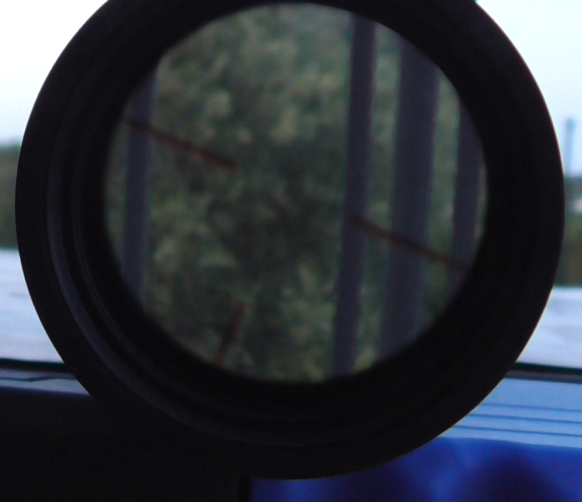After a great day in the field or at the range, have you ever finished up, buttoned up the lens covers, cleaned the gun and put it in the cabinet only to realize a couple of weeks later that you left the riflescope's illumination switched on? I have. Have you ever sat in a hunting spot in low light and switched the illumination on, not realizing you had it daylight bright from your last range session, so blinded your night vision with it? Check the box, I've done it. What if there was technology that made it impossible for these things to happen? Since 2019 Meopta has been working with dicroic technology in their reticles which fixes these issues.

How it Works
On the left you can see an example of the DichroTech reticle made for the 6.5cm. They offer this technology in many of their reticle choices. Notice how the posts look like they are an illuminated red? On a side note, they are also semi-translucent so you can see the target through the posts. This is new to me, and I find that I like it. There is no battery creating this look, but rather special thin film coatings are applied to the reticle which tunes wavelengths of light to allow the reticle to appear illuminated. Not only is this operation battery free, but it also adjusts contrast based on background and available light which eliminates the need for a "settings" knob.
As seen in the picture, during the day the dicroic coatings make the reticle look like the familiar red illumination. The film coating changes the apparent view based on the amount of ambient light available (combined with the background) to change the reticle color for highest contrast.
Drawback: Hunting at Night
If you like to hunt in the dead of night (i.e., for hogs/coyotes) this technology does need background light to work. I have not taken it out and tried using it with a pig light (will do in November) or the moon, but if you are hunting in the darkest conditions you may still want to go with the old tried and true CR2032 battery power.
Benefits
There are benefits to using a battery free solution. If you are in far flung remote hunting areas it is nice not to have to worry about battery backup. Also, in general, the less mechanical technology associated with equipment, the less likely equipment malfunction becomes. Just like my old X-terra or Chevy Scottsdale, with manual windows the switch never breaks. Even if you opt for one of Meopta's battery powered options and do encounter a problem, it would be covered under warranty, but it is nice not to have to deal with it.
So, Does it Work?
Yes, it clearly works as intended; answering the question of if it will work for your application is probably case dependent. To help you understand how it works, and how much light is required to utilize the technology, below you will find a series of images through the scope as the sun sets. I provide interval times and local sunset time (8:20, shots start at 7:38) to give you an idea of how the reticle looks as we approach sunset (I would expect dawn to operate similarly).
You be the Judge
To give you a better idea of how this works/looks I shot a video from 7:40 to 8:20 (official sunset). You will then see still shots until about 8:48. Don't worry, the video rolls at 64x so you don't have to watch in real time. The reason I stopped at 8:48 was that was three minutes past when I might shoot. At 8:40ish I was able to see enough to shoot provided the crosshairs were on a light background. So if you are hunting over a cornfield in the fall or something it would be great. All views were fine though 8:30 and as we approached 8:40 the deep shadows were the first to go. You can easily shoot 10-15 min past sunset, then the shadows become difficult around 8:40-8:45 then I would probably call it dark by 8:50. There was no moon... I will try it with a full moon and report back. Images may be out of focus, but the camera was struggling mightily and I was more interested in if I could use the reticle. In all cases the scope with the eye was significantly better than the camera's images.
Part of the issue is that the camera was failing before the scope did, so I started to worry that I wasn't actually testing what I wanted. Here is the video and the images so you can check it out.
Summary
Overall, I am satisfied enough that it will be in the field with me during deer season and I will be using it on an upcoming Aoudad hunt out in the Davis/Glass mountains. Like any new technology, there is a learning curve involved but if it gives me a chance to get away from some battery power I am more than willing to try it out.
Fast Motion Video
7:38

7:50

8:00

8:10

8:20

8:30

8:40

8:45/8:48 Just to show you how dark it was getting





Comments